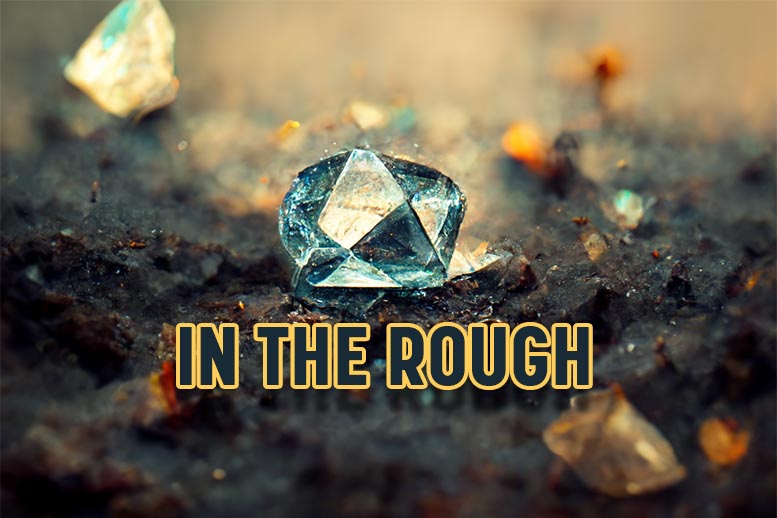 The biggest challenge for a new blogger is readership, not visitorship. Most who have the fervor to embrace the blog as a real estate marketing tool have no problem developing the content. Dropping a post on ActiveRain or Digg will generate an instant audience. It’s enticing that audience to actually read one’s work that eludes most.
The biggest challenge for a new blogger is readership, not visitorship. Most who have the fervor to embrace the blog as a real estate marketing tool have no problem developing the content. Dropping a post on ActiveRain or Digg will generate an instant audience. It’s enticing that audience to actually read one’s work that eludes most.
Poorly formatted blog copy (writing) will scare off the audience you worked so hard to inform.
The audience you are reaching is not an ideal group of readers. Readers of your blog are going to barrel through your article at a pace much faster than you expect as you toil over the composition of each sentence. Realize that they aren’t cozying up with it on the couch nor are they taking it into the john. Your readers are just stopping by for a quick look before they head off to the next mental snack.
To improve blog readership, one needs to recognize that blog writing is unique unto itself. It is nothing like writing a novel, an essay, a letter, a column nor a postcard. Blog writing, for me, is more like a mash up of a baking recipe and a popular magazine article. With recipes, the items you are notating are supremely important and nothing should be overlooked, and with a popular magazine the presentation is a form of entertainment, and the articles are snack-sized bites. Don’t think New Yorker, think Wired.
1. Headlines– Killer Titles generate killer traffic
This article is written as an apprenticeship to Copyblogger. In an effort to not take credit for illustrating the importance and development of the killer headline, read these 3 great pieces by the master himself.
How Great Headlines Score Traffic
10 Sure-Fire Headline Formulas That Work
7 More Sure-Fire Headline Templates That Work
My favorite Copyblogger technique is to have actually written the Headline for the article before writing the article itself.
2. Pictures – Immediate attention grabbers.
If your title didn’t fully sell the article, the picture(s) can.
If a picture can tell a thousand words then you may have just more than doubled your content.
Additional pictures staggered through an article are rewards for reading on, and often ‘buy’ you a few more minutes with your audience.
3. Short Paragraphs – Don’t be afraid to break a thought into more that one paragraph
This is one of the main distinctions of the blog formatting style that separates it from the other forms of writing mentioned above. I can hear my English professor cursing me every time I break up a paragraph that in standard formatting would be bad form. Yet, I see this technique as so necessary in order to keep the reader from just skipping it all together, not wanting to commit to my wordy descriptions.
4. Bolding The Killer Sentence – Ensure the casual reader gets the point and value.
One goal for a blog should be maintaining and acquiring regular readers. By highlighting the main points of an article, the casual reader can quickly identify the value of the article and in turn the perceived value of their next visit.
5. Lists – Attention getting 101.
As much as I can’t stand Letterman, I will always sit through a Top 10 that I happen to have stumbled across.
Two great Copyblogger articles on developing list blogs:
7 Reasons Why List Posts Will Always Work
Five Reasons Why The List Post Is Dead
6. Links – What’s behind the door?
The mystery, the resource, the relationship, the easter egg. Rewarding your readers with more on the topic they came for… mmm good.
Links can also help add to the brevity of the article. Let other articles support your arguments so that you don’t have to reiterate what has already been said/established.
7. Get To Your Point – The recipe is not a story, it’s the formula to success.
Long, decorative intros are like bad breath.
2 BONUS TIPS:
8. Block Quotes – It’s as if the quote tries to tell the whole story in a single sentence.
This aesthetic tease is a blatant rip-off from the formatting seen in magazines. Sometimes trying to locate the actual context of this wordly snack is enough reason to read the whole article. Like an image, block quotes are also a way to reward your reader for hanging in there.
9. The Extended Entry –
Until you have become a ‘must read’ blog, the sight of an article that is more than a few paragraphs long is a deterrent in itself. Breaking longer articles into two sections has two major benefits:
1. The shorter appearance of the article won’t intimidate the audience, enticing them to commit now rather than thinking, “I’ll save this for later”.
2. Most statistic programs can’t tell you how long someone has been on your site until a link is actually clicked. Readers clicking on the “continue reading this article” link will activate the time-stamp producing a more faithful estimate of your readers’ visit lengths. Readers that ‘read and leave’ without clicking will register as 0:00 no matter how long they stayed.
It is always a good practice to entice the reader into clicking the ‘continue reading’ link by breaking the article just before something juicy like a list, twist or the meat of the article.




